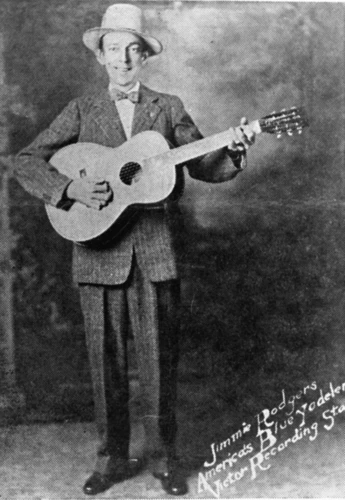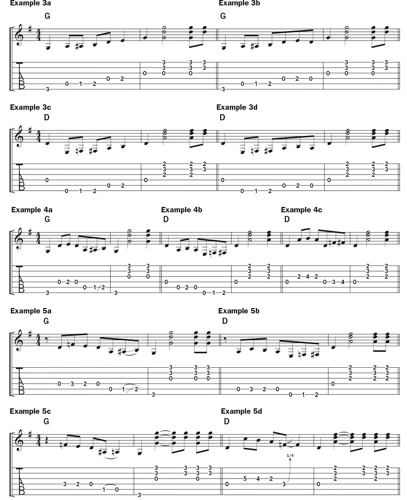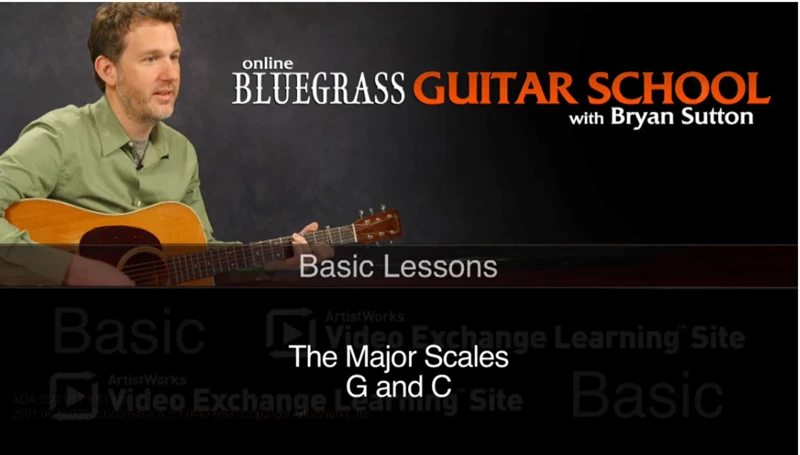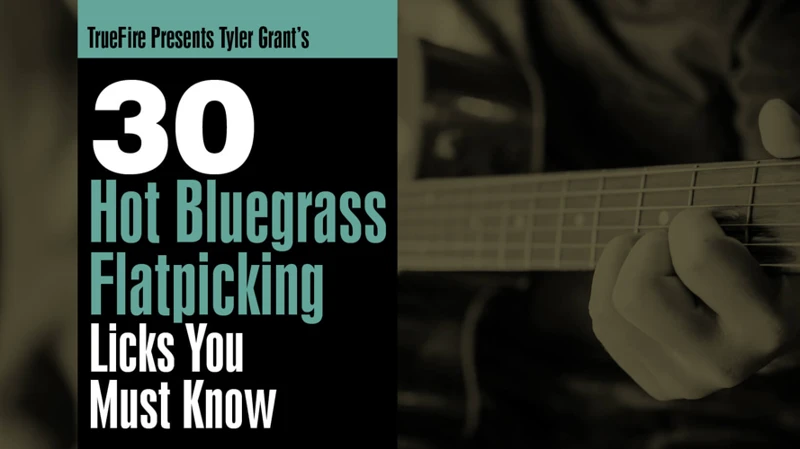Introduction
You’ve likely heard the twangy, upbeat sounds of country music before, but have you ever stopped to consider just how intricate and skilled the guitar playing can be? That’s where flatpicking comes in. This technique involves using a flat pick to play rapid-fire melodies and solos, often in the context of bluegrass-inspired country music. In this section of the article, we’ll delve into the history of flatpicking, explore different techniques you can use in your playing, and provide tips for integrating flatpicking into your country song structures and live performances. So grab your guitar and let’s get started!
What is Flatpicking?
Flatpicking is a guitar playing technique where the player uses a plectrum or pick to play individual notes on the guitar. The style is commonly used in bluegrass and country music and is known for its fast-paced and energetic sound.
The following table provides an overview of the characteristics of flatpicking:
| Feature | Description |
|---|---|
| Instrument | Acoustic or electric guitar with steel strings |
| Picking Technique | Use of a plectrum or pick to play individual notes |
| Genres | Bluegrass, country, folk, and Americana music |
| Tempo | Generally fast-paced with a focus on speed and accuracy |
| Chord Progression | Simple and repetitive, often using only three or four chords |
| Flatpicking Instruments | Acoustic guitar, mandolin, and banjo |
Learning flatpicking can be a challenging but rewarding experience, with many benefits for musicians looking to improve their skills. To get started with flatpicking, check out our flatpicking exercises for electric guitar and tips for improving flatpicking technique.
History of Flatpicking in Country Music
Throughout the years, country music has undergone various transformations- from exciting fiddle tunes to electrifying guitar riffs. The evolution of country music is incomplete without mentioning the significance of flatpicking – a technique that has been an essential component of country music. Flatpicking, a method of playing with a guitar pick, adds to the distinctive sound that differentiates country music from other genres. Let’s journey through the history of flatpicking in country music and discover its evolution from early country music to modern-day bluegrass-inspired country music. From the early days of country music to the present, flatpicking has always been an integral part of the genre. To learn more about flatpicking in electric guitar and its specific benefits, check out /flatpicking-electric-guitar-intro/.
Early Country Music
During the early years of country music, flatpicking was not the dominant style of playing. The guitar was mostly used as a rhythm instrument, providing accompaniment for the singer. However, there were some early pioneers who used flatpicking in their music.
One of the earliest recorded flatpicking guitarists was Arnold Shultz, a musician from Kentucky who played with early country music legend Bill Monroe. Shultz’s style was a mix of blues, ragtime, and country music, and he was known for his intricate fingerpicking patterns and speedy runs.
Another influential musician from the early country music era was Maybelle Carter of the Carter Family. Carter is credited with popularizing the “Carter Scratch,” a style of playing that involved strumming the bass strings with the thumb while picking the melody with the fingers.
Despite the popularity of other playing styles during this time, flatpicking began to gain traction among some players. It wasn’t until the emergence of bluegrass music, however, that flatpicking became widely recognized as a defining characteristic of country music.
The Birth of Bluegrass
The Birth of Bluegrass music is deeply connected to the Appalachian region of the United States, where immigrants from Scotland, Ireland, and England brought their musical traditions. Bluegrass music combines these traditional sounds with jazz and blues elements, forming a unique and lively style that has captured audiences for decades.
Bill Monroe is often credited with creating the Bluegrass sound in the 1940s. He was a talented mandolin player who formed the band The Blue Grass Boys, which included other musicians like guitarist Earl Scruggs and banjo player Don Reno. Their approach to the traditional music incorporated elements of swing, blues, and Appalachian folk, and they began to draw large crowds to live performances.
The Blue Grass Boys signature sound relied heavily on the use of flatpicking on guitar, and Earl Scruggs’ distinctive three-finger style of banjo playing. Scruggs’ picking style, which involved using three fingers instead of the traditional two, revolutionized banjo playing, and created a new sound for the instrument that is still widely used and imitated today.
Bluegrass music is known for its fast tempos, intricate melodies, and virtuosic instrumental solos. The combination of mandolin, banjo, fiddle, guitar, and bass creates a full and engaging sound that is hard to resist. Flatpicking on the guitar is a key component of the bluegrass sound, and many guitarists have built careers on their flatpicking prowess.
As Bluegrass music grew in popularity, it began to influence other styles of music, including Country. Today, many Country songs draw inspiration from Bluegrass music, and flatpicking techniques are incorporated into many modern Country songs.
If you want to learn more about the benefits of flatpicking in Country music, check out our article on Flatpicking in Country Music. For top flatpicking techniques for electric guitar, check out Top Flatpicking Techniques for Electric Guitar. And if you’re looking to improve your flatpicking speed and accuracy, be sure to read our guide on Flatpicking Speed and Accuracy.
Modern Country Music
Modern country music has continued to evolve over the years, with the incorporation of various music styles, including rock, pop, and even rap. The use of flatpicking in modern country songs remains prevalent, and it has been utilized by some of the genre’s most prolific musicians. Flatpicking in modern country music is characterized by its fast and precise playing style, which makes it ideal for uptempo songs with intricate melodies.
To play flatpicking solos in modern country music, a player must develop proficiency in various techniques, such as alternate picking and hybrid picking. These techniques enable the player to execute fast and complex notes with precision and ease. One common feature of modern country music is its tendency to incorporate flatpicking licks into solos to add more depth and excitement to the song.
Another aspect of modern country music that flatpicking complements well is the use of electric guitars. With electric guitars, players can experiment with different sound effects, such as distortion and delay, to create unique sounds that complement the song’s theme or message. Using flatpicking in conjunction with electric guitars can be a powerful combination that makes any modern country song stand out.
However, it’s worth noting that while modern country music continues to push creative boundaries, some purists suggest that it’s losing touch with its roots. Many of these critics argue that modern country music is becoming too commercial, with songs that lack the authenticity and sincerity of the genre’s earlier years. Nonetheless, flatpicking remains an essential part of modern country music, even as it blends with other music styles.
If you want to learn more about the difference between flatpicking and fingerpicking, or want to discover more flatpicking licks and solos, you can find them in other sections of this guide.
Flatpicking Techniques for Bluegrass-Inspired Country Music
When it comes to playing bluegrass-inspired country music, flatpicking is an essential technique that every guitarist should have in their arsenal. Flatpicking, also known as plectrum picking, involves using a guitar pick to pluck individual notes on the guitar strings. This technique allows for faster and more intricate playing, and is a hallmark of many bluegrass and country guitarists. In this section, we’ll explore some of the key flatpicking techniques that can take your playing to the next level, from alternate picking to chicken picking. And if you’re looking for some inspiration for your solos and licks, be sure to check out our flatpicking licks and solos section.
Alternate Picking
One of the most fundamental techniques for flatpicking is alternate picking. Alternate picking is when you use a downward stroke followed by an upward stroke, and continue repeating the pattern throughout the exercise or song. This technique is crucial in bluegrass-inspired country music since it allows for faster and more precise playing.
To practice alternate picking, start with a simple exercise that involves playing open strings in a pattern. Here’s an example of an alternate picking exercise:
| String | Note | Technique |
|---|---|---|
| 1 | E | Downstroke |
| 2 | B | Upstroke |
| 3 | G | Downstroke |
| 4 | D | Upstroke |
| 5 | A | Downstroke |
| 6 | E | Upstroke |
Repeat this exercise slowly at first and focus on keeping a steady rhythm. As you get more comfortable with the pattern, gradually increase the speed. You can also try applying alternate picking to simple chord progressions and scales.
In addition to the standard alternate picking technique, you can also incorporate sweep picking. Sweep picking is when you play multiple notes on adjacent strings in a single downward or upward motion. This technique is popular in country guitar playing, and it’s often used to play arpeggios and other fast, fluid lines.
While alternate picking and sweep picking may seem difficult at first, they’re essential techniques for any aspiring flatpicker. With enough practice and dedication, you’ll be able to incorporate these techniques into your playing and add a new level of complexity and speed to your music.
Hybrid Picking
Hybrid picking is a technique that is commonly used in bluegrass-inspired country music. This technique combines both the use of a flatpick and the fingers to create a unique and intricate sound. With hybrid picking, guitar players can achieve fast and complex phrases that are not possible with just flatpicking. In this article, we’ll explore the basics of hybrid picking, including how to execute the technique, and some tips for mastering it.
Hybrid picking involves holding a flatpick between the thumb and index finger, while the remaining fingers are used to pluck individual notes. This allows for greater control, accuracy, and speed, as the fingers are able to pluck strings faster than a pick alone. The technique is especially useful for playing complex melodies and runs.
There are a few different approaches to hybrid picking, depending on your preferences and the specific effect you want to achieve. Some players opt to use their middle finger to pluck the strings, while others may use their ring finger or pinkie finger. Additionally, some may use the flatpick to pluck notes as well, using different combinations of fingers and the pick.
One common technique for hybrid picking is to use the pick to pick the lower strings (typically the 4th, 5th, and 6th strings), while using the remaining fingers to pluck the higher strings (typically the 1st, 2nd, and 3rd strings). This combination creates a distinctive sound that is commonly heard in bluegrass music.
To execute hybrid picking, start by gripping the pick between your thumb and index finger, as you would for traditional flatpicking. Then, use your remaining fingers to pluck individual strings as needed. As with any new technique, it may take some practice to get the hang of hybrid picking. However, with time and patience, you’ll be able to execute this technique with ease.
Here’s a table summarizing the basics of hybrid picking:
| Technique | Description |
|---|---|
| Hold the pick | Grip the pick between the thumb and index finger. |
| Use remaining fingers | Pluck individual strings with the remaining fingers (middle, ring, and/or pinkie). |
| Use pick and fingers | Experiment with different combinations of fingers and the pick for unique sounds. |
With hybrid picking, there are endless possibilities for creating unique and intricate sounds. Whether you’re playing lead guitar in a bluegrass band, or looking to expand your repertoire as a country-style soloist, hybrid picking is a technique that is worth exploring. Start by mastering the basics of the technique, and then experiment with different finger combinations and picking patterns to create your own signature sound.
Chicken Picking
One of the lesser-used but incredibly distinctive flatpicking techniques is known as chicken picking. This technique involves a mix of picking and lightly muting the strings with the palm of your picking hand to produce a staccato sound. It’s commonly used in modern country music and can provide a unique and percussive element to any guitar arrangement.
To execute the chicken picking technique, follow these steps:
- Use palm muting: Rest the palm of your picking hand lightly on the strings nearest to the bridge while still allowing the tip of your pick to come into contact with the string.
- Alternate picking: Use alternate picking (down-up strokes) for each note to keep the rhythm tight and consistent.
- Bend strings: Use string bending to add a unique tonal element to your chicken picking lines.
- Juicy licks: Have fun with the technique and experiment with different licks, riffs, and note patterns to find your signature chicken picking sound.
Be aware that chicken picking can be an advanced technique that takes time and practice to master. Start slowly and focus on getting the muting and picking motions correct before increasing your speed. As with any flatpicking technique, a good place to start is by practicing scales and simple patterns before moving on to more complex lines.
Incorporating chicken picking in your country guitar repertoire can add a fun and dynamic element to your playing style. Try it out and see what kind of unique sounds you can achieve.
Choosing the Right Guitar and Strings
When it comes to using flatpicking in bluegrass-inspired country music, choosing the right guitar and strings is essential for a clear and powerful sound. The guitar should have a bright and crisp tone that can cut through the mix. A dreadnought or OM-style acoustic guitar is a popular choice for country flatpicking due to their strong mid-range and high-end frequencies. However, a Jumbo, Grand Auditorium, or even a Parlor-style guitar could also work depending on the specific sound you want to achieve.
In addition to the guitar, selecting the right strings is just as important. Medium-gauge strings are generally the best option for a balanced tone and easy playing. The gauge is measured by the thickness of the strings, and medium gauge is typically around .013 to .056. However, you may want to experiment with different gauges to find the perfect balance for your playing style and the sound you’re aiming for.
When selecting strings, there are a few factors to consider. First, you’ll want to think about the material of the strings. Phosphor bronze and 80/20 bronze are popular choices for acoustic guitars. Phosphor bronze strings typically have a warmer tone and are more mellow, while 80/20 bronze strings are brighter and more vibrant. Second, consider the coating on the strings. Coated strings are coated in a thin layer of polymer that can help prolong their lifespan and prevent them from rusting. Though coated strings are more expensive, they can be a worthwhile investment if you’re playing frequently.
Ultimately, selecting the right guitar and strings for your flatpicking style is a personal decision that will depend on your playing abilities and preferences. It’s important to experiment with different options until you find the perfect combination that is comfortable for you to play and produces the sound you want to hear.
Using Flatpicking in Country Song Structures
As a flatpicker, it’s essential to understand how to use this technique effectively within the context of a country song. Whether you’re playing a classic country ballad or a bluegrass-inspired tune, the structure of the song plays a crucial role in determining where and how to use your flatpicking skills. By exploring different sections of a typical country song and considering various approaches to each, you’ll be better equipped to showcase your flatpicking prowess while adding a unique flavor to the overall sound. So let’s dive in!
Verse
When incorporating flatpicking into country song structures, it’s important to understand the role of the verse. The verse usually sets up the story or message of the song and provides context for the chorus. Here are some tips for utilizing flatpicking in the verse:
- Strumming Technique: Try using an alternating bass pattern while strumming the chords. This can create a driving rhythm and provide a solid foundation for the melody to sit on top of.
- Fingerpicking: Fingerpicking can create a more intricate and delicate sound in the verse. Try using a simple pattern, like alternating between the thumb and index finger, to keep the rhythm going.
- Chord Progressions: The verse chord progression is usually simpler than the chorus, but it’s important to make sure it sets up the chorus well. Common progressions include I-IV-V, I-V-vi-IV, and ii-V-I. Experiment with different progressions to find what works best for your song.
- Melody: The melody of the verse should be catchy and memorable, but not overshadow the chorus. Try incorporating some flatpicking runs or double stops to add interest to the melody.
Remember, the verse sets up the rest of the song, so make sure to give it the attention it deserves when incorporating flatpicking. By using techniques like alternating bass, fingerpicking, and incorporating interesting melody lines, you can make the verse just as exciting as the chorus.
Chorus
When it comes to using flatpicking in bluegrass-inspired country music, the chorus is an essential part of any song. This is where the main message of the song is conveyed and often features a memorable hook or melody that listeners will remember long after the song is over. In this section, we’ll look at how you can incorporate flatpicking into your choruses.
Chorus Structure
The chorus typically follows the verse and is repeated several times throughout the song. It usually has a more straightforward chord progression and melody compared to the verse. The goal of the chorus is to create a singalong moment that encourages the audience to join in.
One common chord progression you will find in a chorus is the I-IV-V progression. For example, in the key of G, the chords would be G, C, and D respectively. Another popular progression is the ii-V-I progression, which can be heard in many jazz standards. In the key of G, the chords would be Am, D, and G.
Flatpicking Techniques in the Chorus
When playing flatpicking guitar in the chorus, you’ll want to stick with a steady rhythm that complements the melody of the vocals. This means using a combination of downstrokes and upstrokes to create a smooth motion. You can also use different techniques like alternate picking, hybrid picking, or chicken picking to add complexity to your playing.
To emphasize the melody of the vocals, you can use arpeggios or triads in your chord progressions. This enables each note of the chord to be heard separately and makes your playing sound more intricate. You can also incorporate slides, bends, and vibrato to create a more expressive sound.
To help you get started, here’s a table featuring a few common chord progressions you might find in the chorus of a bluegrass-inspired country song:
| Chord Progression | Key |
|---|---|
| I-IV-V | G |
| I-vi-IV-V | G |
| ii-V-I | G |
| I-vi-iii-IV | C |
| I-IV-vi-V | D |
Conclusion
The chorus is a crucial part of any bluegrass-inspired country song, and incorporating flatpicking into it can make it even more impactful. Whether you’re using arpeggios, triads or incorporating slides and bends, make sure to keep the melody of the vocals in mind. Experiment with different techniques and chord progressions to create a sound that is uniquely yours.
Bridge
The bridge section in a country song is often the moment where the music takes a slightly different turn before returning to the original theme. This part of the song is usually marked by a shift in chord progression, rhythm or melody which creates a sense of anticipation and excitement among listeners.
Using Flatpicking in the Bridge Section
To incorporate flatpicking in the bridge section of a country song, it’s important to experiment with different chord progressions and melodies. The bridge section is the perfect opportunity to showcase your flatpicking skills as it provides a break from the repetitive structures of the verse and chorus.
One of the best ways to incorporate flatpicking in the bridge section is to use arpeggios. Arpeggios are a series of notes played one after the other to create a melody over a chord progression. By using arpeggios, you can add a unique sound to the bridge that sets it apart from the rest of the song.
Another technique that can be used in the bridge section is crosspicking. Crosspicking involves picking three or four strings in a repeated pattern to create a rolling effect. This technique is often used in fast-paced bluegrass songs and can be incorporated into the bridge section of a country song to add some excitement.
Table: Chord Progression for the Bridge Section
| Chord | Beats |
|——|——–|
| G | 2 |
| D | 2 |
| Am | 2 |
| C | 2 |
| G | 2 |
| D | 2 |
| Em | 2 |
| C | 2 |
A common chord progression for the bridge section in country music is shown in the table above. It’s important to experiment with different chord progressions to find one that fits the overall tone of the song.
The bridge section of a country song provides a great opportunity for flatpickers to showcase their skills. By incorporating techniques such as arpeggios and crosspicking, and experimenting with different chord progressions, you can create a unique sound that sets the bridge apart from the rest of the song.
Solo Section
When it comes to the solo section in a bluegrass-inspired country song, this is your time to shine as a flatpicker. This is where you can show off your skills and really make the guitar sing.
Structure
The solo section usually follows the second chorus of the song and typically lasts anywhere from 16 to 32 bars. It’s important to pay attention to the song structure and not play over the vocals or other instruments.
Techniques
During the solo section, you can incorporate a variety of flatpicking techniques like tremolo picking, double stops, and sliding and bending. You can also use scales and arpeggios to create melodic patterns that fit with the chord progression of the song.
Improvisation
The solo section is also a great time to improvise and create your own unique melody. You can use the chords and structure of the song as a framework and then add your own personal touches to it.
To give you an idea of what a solo section might look like in a bluegrass-inspired country song, here’s an example of a 16-bar solo in the key of G:
| Bar | Chord | Notes |
|---|---|---|
| 1 | G | G major scale |
| 2 | G | Bending and sliding on the G string |
| 3 | C | Using the C major scale |
| 4 | G | Double stops on the G and B strings |
| 5 | D | Using the D major scale |
| 6 | G | Tremolo picking on the high E string |
| 7 | G | Using the G major pentatonic scale |
| 8 | Em | Using the E minor scale |
| 9 | C | Using the C major scale |
| 10 | G | Bending on the G string |
| 11 | D | Using the D major scale |
| 12 | G | Double stops on the G and B strings |
| 13 | G | Using the G major pentatonic scale |
| 14 | Bm | Using the B minor scale |
| 15 | C | Using the C major scale |
| 16 | G | Final bend and slide on the G string |
As you can see, the solo section provides a lot of room for creativity and expression. With a bit of practice and knowledge of flatpicking techniques, you can create your own impressive solo sections that perfectly complement the rest of the song.
Common Flatpicking Bluegrass Chords and Progressions
Have you ever noticed how certain chords and progressions seem to pop up time and time again in bluegrass-inspired country music? If you’re a flatpicker looking to enhance your playing, it’s important to have a solid grasp on these go-to musical elements. In this section, we’ll explore some common chord progressions and specific chords that are frequently used in the genre. By understanding the backbone of your favorite bluegrass-inspired country songs, you’ll be better equipped to create your own arrangements and solos.
Major Chords
When it comes to playing flatpicking bluegrass-inspired country music, mastering major chords is essential. These chords are the foundation of many popular country songs and can help create a sunny, upbeat atmosphere. Here are some of the most common major chords used in flatpicking country music:
- A Major: This chord is made up of the notes A, C♯, and E. It’s a popular chord for country songs because of its bright and triumphant tone.
- C Major: Made up of the notes C, E, and G, this chord has a crisp and clear sound that works well in a variety of country songs.
- D Major: The notes D, F♯, and A make up this chord and give it a bright and triumphant sound, perfect for many country songs.
- E Major: Made up of the notes E, G♯, and B, this chord is beloved in the country music world for its bright and lively tone.
- G Major: This chord is made up of the notes G, B, and D and has a classic country feel to it. Many popular country songs use this chord in their chorus section for a catchy and uplifting melody.
As you practice these chords, pay attention to your technique and make sure you’re placing all fingers in the right places. Take your time and practice until you can effortlessly switch between each chord. A little bit of perseverance and practice can go a long way in helping you master these major chords and start playing your favorite country songs.
Minor Chords
Minor chords add a perfect touch of melancholy to any bluegrass-inspired country song. They are generally used in sad songs or lonesome ballads. Minor chords can add a sense of depth and emotion to a song that major chords cannot. To add some minor chords to your flatpicking repertoire, here are some common minor chords and progressions to get started with:
| Chord | Notes | Common Progressions |
|---|---|---|
| Am | A C E | Am-F-C-G |
| Dm | D F A | Dm-G-C |
| Em | E G B | Em-B7-C-G |
| Bm | B D F# | Bm-G-D-A |
The ‘Am’ chord is a great place to start with minor chords. Placed at the beginning of a chord progression or song, it sets a somber tone that will stick with the listener throughout the song. The ‘Dm’ chord, with its unique sound, can add a sense of sadness to the song, making it perfect for ballads.
The ‘Em’ chord is a unique minor chord that is often used in bluegrass-inspired music. It works well in transition between two chords, and it leaves the listener expecting something more to be added to the song. Finally, the ‘Bm’ chord adds a sense of mystery to the song, making it perfect for creating a contrast in the overall feel of the song.
By incorporating these minor chords and progressions into your flatpicking, you can add a darker and more emotional touch to your bluegrass-inspired country music.
7th Chords
Seventh chords are an essential element of bluegrass-inspired country music, providing a rich and complex tonality to chord progressions. These chords are created by adding a seventh note to a standard triad, referred to as the “seventh” note of the chord. There are three main types of seventh chords commonly used in bluegrass-inspired country music: dominant seventh, major seventh, and minor seventh.
Dominant seventh chords are characterized by their strong sense of resolution to a corresponding tonic chord, and are often used in blues and rock music as well as bluegrass. They’re constructed by adding a flatted 7th note to a major triad, so a G7 chord, for example, would consist of the notes G, B, D, and F.
Major seventh chords have a softer, more ethereal quality that can add a dreamy, contemplative feeling to a song. They’re created by adding the major 7th to a major triad, so a Cmaj7 chord would consist of the notes C, E, G, and B.
Minor seventh chords are often used in country ballads and slow, emotional tunes because they have a mournful, wistful quality. They’re constructed by adding a flatted 7th note to a minor triad, so an Am7 chord would consist of the notes A, C, E, and G.
When playing seventh chords in bluegrass-inspired country music, it’s important to pay attention to the context of the song and use chords that fit the melody and emotions being conveyed. Experimenting with different voicings and positions on the guitar can provide a wider range of tonal possibilities and make the music more interesting.
Here are some common seventh chords used in bluegrass-inspired country music, along with their corresponding triads:
– G7: G, B, D (major triad) + F (flatted 7th)
– C7: C, E, G (major triad) + Bb (flatted 7th)
– D7: D, F#, A (major triad) + C (flatted 7th)
– Em7: E, G, B (minor triad) + D (flatted 7th)
– Am7: A, C, E (minor triad) + G (flatted 7th)
– Bm7b5: B, D, F (diminished triad) + A (flatted 7th)
Experimenting with these chords and incorporating them into your playing can add depth and complexity to your bluegrass-inspired country music.
Flatpicking Exercises for Beginners
If you’re new to flatpicking, then exercises are a great way to get started. Before diving into more complex techniques and arrangements, it’s important to focus on building a strong foundation. Here are some beginner flatpicking exercises to help you develop your skills.
1. Alternate Picking Exercises: Start with simple exercises that focus on alternate picking, which requires you to use a downstroke followed by an upstroke. You can start by trying to pick each string four times in a row, using alternate picking. Practice these exercises with a metronome, gradually increasing the speed over time.
2. Chord Exercises: Next, try practicing chord changes using basic chord shapes. Start with simple progressions such as G-C-D, and practice strumming each chord evenly with the pick. Pay close attention to your hand position and try to maintain a consistent rhythm.
3. Scale Exercises: Scales are an essential part of flatpicking, as they help with finger strength and dexterity. Start with the basic major and minor scales, and practice using alternate picking to play each note. Focus on accuracy and gradually increase the speed as you improve.
4. Arpeggio Exercises: Arpeggios involve playing each note of a chord individually, usually in a specific order. Practice arpeggios for common chords such as G, C, D, and A. This will help you to develop your fingerpicking skills and will also help you to improvise melodies.
5. Timing Exercises: Timing is crucial in flatpicking, so it’s important to work on exercises that develop your sense of rhythm. Start by practicing basic rhythms using a metronome, and gradually increase the speed as you improve. You can also practice playing along with recorded tracks to improve your timing.
Remember, practice is the key to improving your flatpicking skills. Try to set aside time each day to work on these beginner exercises, and before you know it, you’ll be ready to move on to more advanced techniques and arrangements.
Advanced Flatpicking Techniques
As you continue to develop your flatpicking skills, you may find yourself itching for a challenge. Luckily, the world of advanced flatpicking techniques is full of exciting possibilities to explore. From lightning-fast tremolo picking to creative use of sliding and bending, there are a multitude of techniques that can elevate your playing to new heights. In this section, we’ll dive into some of the advanced flatpicking techniques that can help you take your bluegrass-inspired country music to the next level.
Tremolo Picking
Tremolo Picking is a technique that involves rapidly picking a single note to create a sustained, fluttering effect. It is commonly used in bluegrass music to add speed and excitement to solos.
To execute tremolo picking, you should hold down the fret with your left hand while rapidly picking the string with your right hand. The key to success with this technique is to maintain a steady rhythm and keep your picking hand relaxed.
| Step | Description |
|---|---|
| 1 | Select a single note to play |
| 2 | Hold down the fret with your left hand |
| 3 | Begin rapidly picking the string with your right hand |
| 4 | Focus on maintaining a steady rhythm |
| 5 | Keep your picking hand relaxed |
With practice, you can use tremolo picking to add depth and dimension to your flatpicking solos. As you become more comfortable with this technique, try incorporating it into different musical phrases to discover new and exciting sounds.
Double Stops
Double stops are a great way to create a fuller sound in your flatpicking arrangements and solos. A double stop is simply playing two notes at the same time. It’s a technique commonly used in bluegrass-inspired country music, and it can add a lot of depth and richness to your playing.
Here are some double stop ideas to incorporate into your playing:
- Thirds: Play the root note of the chord and then add the note two strings up and two frets over. This creates a third interval which is very common in country music. For example, if you were playing a G chord, you could add the B note to create a G/B double stop.
- Fourths: These are created by playing the root note and then adding the note one string up and one fret over. For example, if you were playing a C chord, you could add the F note to create a C/F double stop.
- Fifths: Similar to fourths, this double stop involves playing the root note and then adding the note one string up and two frets over. For example, if you were playing a D chord, you could add the A note to create a D/A double stop.
When playing double stops, make sure to use your index and middle fingers to fret both notes simultaneously. It may take some time to get used to the technique, but with practice, you will be able to incorporate it seamlessly into your playing style.
Remember, double stops sound best when used sparingly and strategically. Try adding them in during a solo section or a particularly emotional part of a song for maximum impact. By using double stops, you will be able to create more complex harmonies and fuller sounds in your playing, helping you stand out as a unique and dynamic performer.
So, give double stops a try and start incorporating them into your flatpicking repertoire. They are a simple yet effective way to add depth and texture to your music.
Sliding and Bending
Sliding and bending are popular flatpicking techniques that can add a unique flavor to your playing. Here are some tips to help you master these techniques:
- Sliding: Sliding involves moving your finger up or down the fretboard to reach the desired note. To slide, play a note and without lifting your finger, slide it up or down the fretboard until you reach the next note. Sliding creates a smooth, legato effect and can be used to add a bluesy feel to your playing. Experiment sliding into and out of chords, and try sliding into notes from a higher or lower fret to create a cascading effect.
- Bending: Bending involves pushing the string up or down to change the pitch of the note. To bend a note, press down on the string and push it towards the higher frets or pull it towards the lower frets. Bending can add emotion and attitude to your playing and is often used in blues and rock music. To get a good bend, grip the string firmly with your fretting hand and use your other fingers for support. Start with small bends and gradually work your way up to more extreme bends.
- Bend and Release: A bend and release is a combination of the two techniques, where you bend a note and then release it back to its original pitch. This technique can create a dramatic effect and can add a lot of expression to your playing. To perform a bend and release, bend the string up and then release it back to its original position. Practice bending and releasing on different strings and try incorporating this technique into your flatpicking solos.
Remember, sliding and bending take practice to master. Take your time, play slowly and accurately, and gradually work your way up to faster tempos. With perseverance and patience, you’ll be flatpicking like a pro in no time!
Creating Flatpicking Arrangements and Solos
When it comes to creating flatpicking arrangements and solos, there are a variety of approaches that can be taken, depending on the specific sound and feel that you’re looking to achieve. One effective technique is to use chord inversions to add depth and texture to your arrangements. By manipulating the order of the notes within a chord, you can create a sense of movement and tension that will make your solo stand out.
Another technique to consider is using arpeggios or broken chords to create a cascade of notes that highlight the melody line. This can add a sense of complexity and virtuosity to your playing, while also making the song feel more dynamic and engaging to the listener. You might also consider incorporating harmonics into your playing, which can create a beautiful, ethereal sound that is perfect for slower ballads or introspective songs.
When it comes to soloing, one important consideration is the key that the song is in. If the song is in a major key, then you may want to focus on crafting melodic solos that emphasize the root, third, and fifth notes of the scale. On the other hand, if the song is in a minor key, then you may want to focus on using the flattened third or seventh note to create a sense of melancholy or tension.
Of course, one of the key elements of creating effective flatpicking arrangements and solos is practice. By experimenting with different techniques and exploring the nuances of your instrument, you can develop a sense of intuition and muscle memory that will allow you to play with greater precision and control. Consider practicing with backing tracks or collaborating with other musicians to expand your horizons and try out new ideas.
Creating effective flatpicking arrangements and solos is all about finding the right balance between technique, creativity, and emotional expression. By approaching your playing with an open mind and a willingness to explore new ideas, you can create arrangements and solos that are both technically impressive and emotionally moving.
Flatpicking in Live Performances
When it comes to live performances, flatpicking is an essential skill for any bluegrass-inspired country musician. The ability to seamlessly weave intricate guitar solos and accompaniments into a live show is what sets apart a good performer from a great one. But utilizing flatpicking in a live setting can be a challenge for even the most experienced musicians. From playing with a band to solo performances, there are many factors to consider. In this section, we’ll explore how to use flatpicking in live performances, including tips for playing with a band and creating impressive solos.
Playing with a Band
When playing with a band, flatpicking is an essential part of many country music arrangements. Here are some tips to help you shine in a group setting:
- Listen carefully – pay attention to the other instruments and try to match their dynamics and phrasing.
- Stay in time – make sure to lock in with the drummer or rhythm section to keep the song moving forward.
- Communicate with your fellow musicians – use eye contact or musical cues to signal transitions or changes in the arrangement.
- Experiment with different harmonies and fills – don’t be afraid to add your own unique touch to the music.
- Keep it simple – sometimes less is more in a band setting. Don’t overplay or step on other band members’ parts.
Remember, the key to successful flatpicking in a band is to find a balance between playing confidently and being a team player. With practice and patience, you can become an invaluable asset to any country or bluegrass group.
Solo Flatpicking Performances
Performing a solo with flatpicking can be a challenging but rewarding experience for any guitarist. Here are some tips to help make your solo flatpicking performances stand out:
- Choose the Right Material: When selecting material for a solo performance, choose pieces that showcase your strengths as a flatpicker. Whether it’s a fast and flashy tune or a slow and melodic ballad, make sure the material allows you to showcase your singular talent.
- Practice Makes Perfect: Make sure you have thoroughly practiced your chosen material leading up to the performance. Confidence in your playing will help you take risks and create a more dynamic performance.
- Work on Dynamic Playing: Flatpicking solos can benefit from dynamic playing that transitions between soft and loud, slow and fast. Practice picking with varying degrees of intensity to create nuance in your performance.
- Use Chords and Arpeggios: Incorporate chord progressions and arpeggios into your solo performance to add texture and variety to your playing.
- Be Creative with Your Solo: Don’t be afraid to experiment with different flatpicking techniques during a solo performance. Try out new ideas and incorporate them into your performance to keep it fresh and interesting.
- Showcase Your Individuality: Remember that your solo flatpicking performance is an opportunity to showcase your individuality as a guitarist. Be true to your personal style and let your own unique voice shine through in your performance.
With these tips and some practice, you can deliver a memorable solo flatpicking performance that will leave your audience in awe of your skills.
Conclusion
In conclusion, mastering flatpicking techniques can greatly enhance your playing in bluegrass-inspired country music. It takes practice and dedication, but the results are worth it. Don’t be afraid to experiment with different techniques, chords, and progressions to find your unique sound. Remember to select the right guitar and strings that work for you.
Whether you’re playing in a band or as a solo performer, incorporating flatpicking into your live performances can bring a whole new level of excitement and energy to your show. And with advanced techniques like tremolo picking, double stops, sliding, and bending, there’s no limit to what you can accomplish.
So take the time to learn and perfect flatpicking, and you’ll be on your way to becoming a skilled and impressive bluegrass-inspired country musician. Keep practicing and pushing your boundaries to continue growing and evolving as a musician. Who knows where your musical journey will take you next? The possibilities are endless.
Frequently Asked Questions
1. What is the difference between flatpicking and fingerstyle playing?
Flatpicking involves using a guitar pick to strike the strings while fingerstyle playing involves picking the strings with the fingers of the right hand.
2. Can I use flatpicking in other genres besides country and bluegrass?
Yes, flatpicking can be used in a variety of genres including folk, rock, and even jazz.
3. Is it necessary to use a specific type of guitar when flatpicking?
No, any type of guitar can be used for flatpicking as long as it is in good condition and produces a clear sound.
4. How do I know which flatpicking technique to use for a particular song?
It depends on the speed and complexity of the song. Alternate picking is good for fast songs, while hybrid picking and chicken picking are better for slower songs with more intricate phrasing.
5. What type of strings are best for flatpicking?
Medium gauge strings are typically preferred for flatpicking as they produce a fuller sound and are easier to play with a pick.
6. How do I keep my flatpicking rhythm consistent?
It is important to practice with a metronome and focus on keeping an even rhythm. Also, pay attention to the other instruments in the music arrangement and listen for their rhythm patterns.
7. Can I learn flatpicking without taking formal music lessons?
Yes, there are many resources available online such as tutorials, videos, and websites dedicated to teaching flatpicking techniques.
8. What is the best way to improve my flatpicking speed?
Start by practicing slowly and gradually increasing the tempo. Also, focus on alternate picking technique and incorporating chromatic scales into your practice routine.
9. How can I create my own flatpicking arrangements and solos?
Experiment with various chord progressions and try incorporating different rhythms and techniques into your playing. Also, listen to other flatpickers and analyze their playing style to gain new ideas.
10. What are some common mistakes to avoid when learning flatpicking?
Some common mistakes include overusing the pick to compensate for poor finger placement, neglecting to warm up properly before playing, and failing to develop a consistent and even rhythm pattern.









